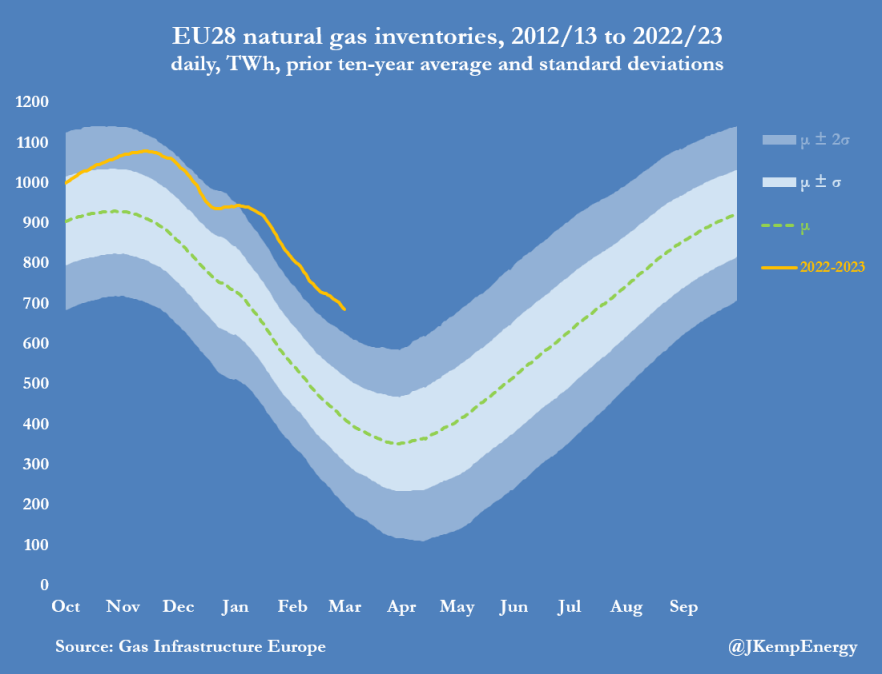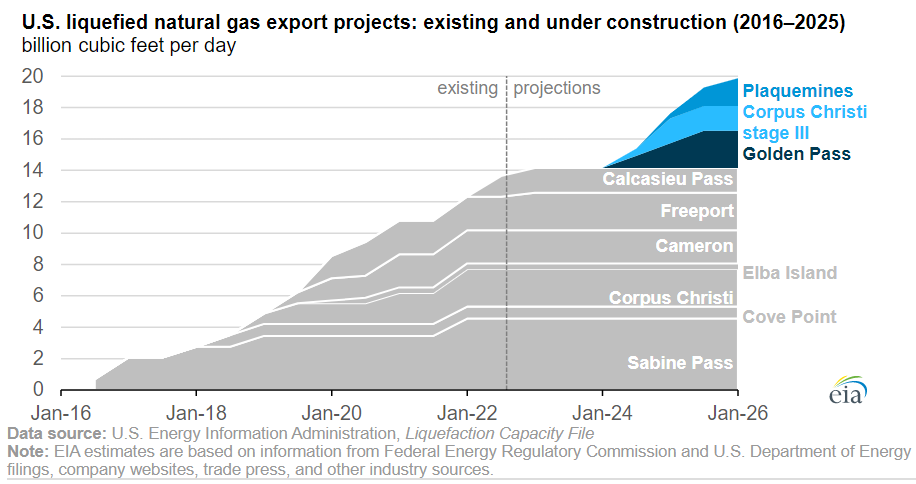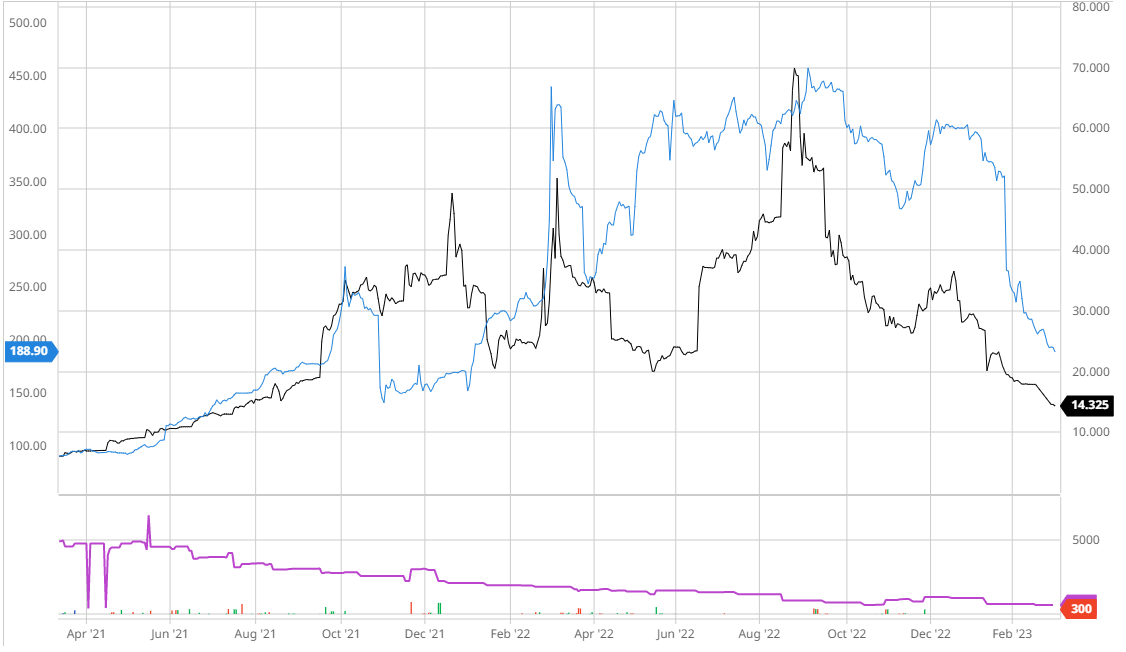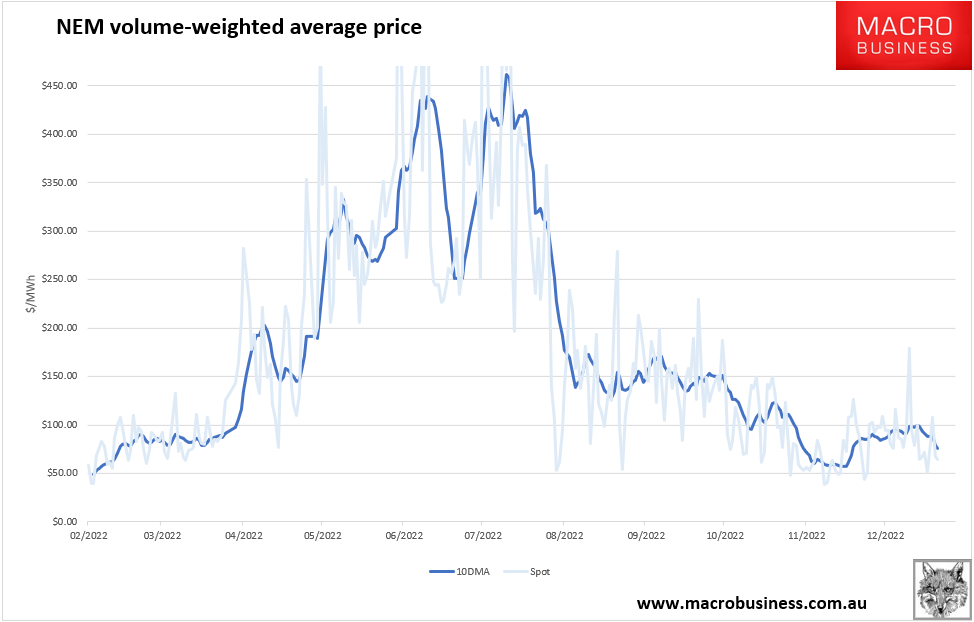As said for many years, the underlying state of the global gas market is over-supply. Not even taking out Russian supply to Europe has changed this. And this underlying reality continues to reassert itself.
Europe now has more gas in storage than ever before:

The US now has more gas in storage than ever before:

Given one is the new swing supplier to the other, this bodes well for cheaper prices still ahead:

Freeport LNG is yet to resume and a whole new wave of supply arrives next year, and it keeps on coming out to 2027:

Chinese coal stocks and production are also at record highs so it has no need to bid aggressively for JKM, which takes the pressure off everybody else in north Asia:
“Recent prices have encouraged South Asian buyers. However it appears sub-$15 still isn’t quite enough for the Chinese,” said Toby Copson, global head of trading at Trident LNG.
“While market weakness is still evident, it’s likely going to take a prolonged period of lows to entice the state-owned enterprises and tier 2 and 3s (players) back. I don’t think we’ve seen the trigger price yet to make the domestic arbitrage profitable,” he added.
Leo Kabouche, LNG market analyst at research consultancy Energy Aspects said that an upside to LNG prices is currently limited due to North Asian buyers’ absence from spot market…
It’s no wonder that JKM keeps falling:

In fact, the ONLY place on earth right now where there is a shortage of gas is Australia’s east coast, an immense supplier of it. Hooray!
And you are still paying through the nose for it in your power bills which remained 50% above pre-Ukraine War price last week:

Worse, electricity futures are still double pre-Ukraine War prices:

The gas cartel that is currently withholding gas from businesses and households on Australia’s east coast was the creation of many. But, perhaps, the man most responsible is former Santos CEO David Knox, who lied to Australia about having enough gas for his export terminals.
As Santos vacuumed up all of everybody else’s spare gas to export, every business and household east of WA has found itself short of gas since 2014.
In turn, this ruined Australia’s decarbonisation plan to use gas as the “transitional fuel” for dispatchable power while renewables rose, as well as wrecking climate politics for a generation (and taking down several governments in the process).
Now, we have this:
NSW Energy Minister Matt Kean has flagged the state government may intervene to extend the life of the nation’s largest coal power station, Eraring, as consumers grapple with soaring costs and a projected energy shortfall.
Delays to both Snowy Hydro 2.0 and the Kurri Kurri generator have left the NSW government facing a reliability shortfall from 2025-26, with the Liddell coal-fired power station set to close in April and the Origin Energy-owned Eraring following in August 2025.
And who runs Snowy Hydro which is responsible for the two projects fast-tracked to fill the dispatchable electricity deficit created by the fantastic Mr Knox?
Why it is the fantastic Mr Knox!
The former gas industry executive who chairs the government owned Snowy Hydro utility has been appointed for another 18 months – a time that the Albanese government expects the company to address its massive cost over-runs and delays at its two key signature projects.
The federal government announced on Friday that David Knox, the former Santos CEO appointed chair of Snowy by the Morrison government from January, 2020, will serve for another 18 months.
Nice work if you can get it.

